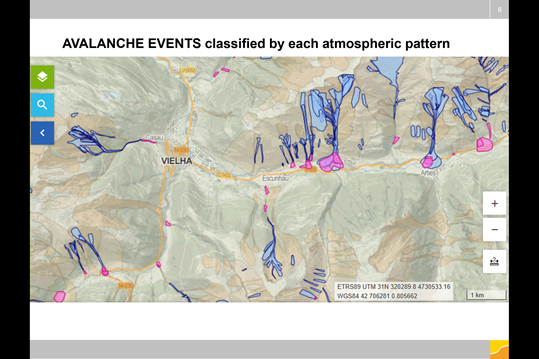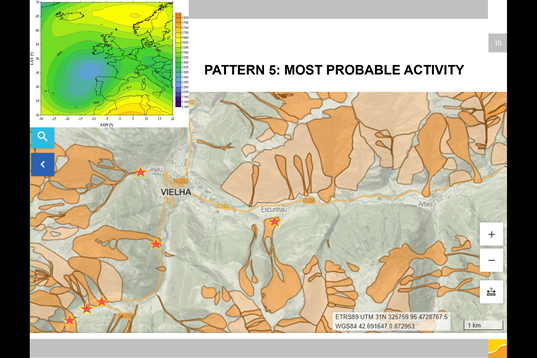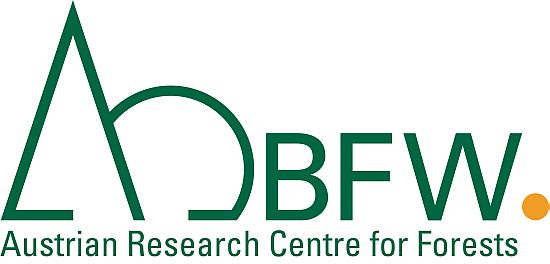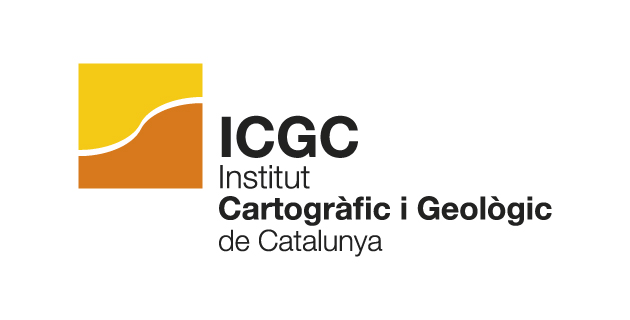The main task of the Avalanche Warning Service of the ICGC (UPA) during the winter season is the avalanche forecasting. Daily the UPA carries out the avalanche bulletin according to the European avalanche danger scale of 5 degrees (from 1 low up to 5 very high). In case of esteemed danger such as level 4 high or 5 very high the UPA carry out special warnings (APA) addressed to Civil Protection exclusively as established in the special civil protection plan ALLAUCAT.
The two main objectives in the frame of the project are: 1) improvement of the forecasting issues in critical situations which involves risk and the attainment of APA and 2) supply a tool to help in the process of decision making.
- The analysis and the assessment of major avalanches occurred in the past and the prediction of new scenarios will allow to refine the APA fulfilment and risky scenarios. Thus, the participation in the project will allow to update the major avalanche scenarios in the Pyrenees of Catalonia in the frame of climate change. A special focus on vulnerable sites will be done in order to increase the safety and to improve the forecasting for critical situations and the issue of APA.
On the other hand, there is a tool for the process of avalanche forecasting that allows the assessment of the snowpack stability in a systematic risk based workflow. The Platform of information of avalanche Hazard called PIPA is a tool that enables the daily forecasting by using the conceptual model to asses snowpack stability. The platform is made up of different levels that are defined as follows. Levels 10 and 11 make up the tool.
- First level: access into the application using a user and password for each forecaster, selection of the snow-climate zone to be assessed, date of realization and date of validity of the forecasting.
- Second level: definition of the scope and the scale of forecasting.
- Third level: input of the main snow and weather data.
- Fourth level: definition and ranking of the snowpack layers that have the main role in the stability.
- Fifth level: Definition of the avalanche situation (problems) associated with the layers defined in the previous stage.
- Sixth level: Definition of avalanche triggering probability according to the spatial distribution (elevations, orientations and spots in danger) and the sensitivity to triggers for each one of the problems defined in the previous stage.
- Seventh level: danger diagram showing the avalanche triggering probability in relation to the expected avalanche size.
- Eighth level: stage where each predictor writes additional comments to monitor the avalanche situation.
- Ninth level: forecasted danger degree for the next 24 hours and its trend for the 48 and 72 hours. It includes the level of confidence level according to the number of data, level of experience, level of reliability of weather forecasting, among others.
- Tenth level: outline of the situation with the visualization of the most relevant features of the previous levels. This summary is used as a communication tool for the different stakeholders: civil protection, observers and forecasters prior to the issue of APA or BPA.
- Eleventh level: definition of the critical situation that would rely on the outline and the most similar major avalanche pattern and the forecasted avalanche activity with a map.


Map of the forecasted avalanche activity (pointed with an orange symbol) according to an specific synoptic pattern








